Welcome to The Curiosity Cupboard
“Children are made readers on the laps of their parents” – Emilie Buchwald
Books come in all shapes and sizes and the transitions can be a joyful one – but stepping into the children’s section of a bookshop for the first time can be a little daunting! There are so many choices available and whilst there are no wrong choices, it can help to know which direction to point your focus towards. Books open up the world to children (and all of us!) – they help them navigate new topics, learn to process emotions and see the world through another’s eyes.
My passion is books so it makes sense to begin this journey together with an exploration of the different book types and the stepping stones they become on a young reader’s introduction to storytelling.
So let’s begin our journey into the Cupboard with a wander around the shelves of children’s fiction…
Board Books
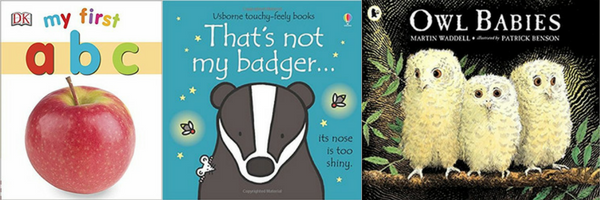
Introducing simple letters and words, statements (that’s not my badger!) and stories with bright colours, touchy-feely pages to engage and perhaps the odd sound button to delight! With thicker pages, they are perfect for little hands to turn themselves as their motor skills develop and they begin to navigate their world. They do often end up a little chewed at the corners – everything goes in their mouths at one stage! – but are durable enough to survive a bit of rough treatment.
Picture Books
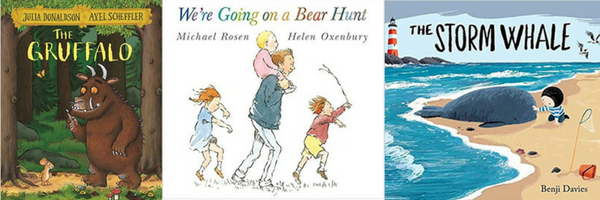
Beginning with rhyming tales to build concentration – the repetition helping with recognition of new words and characters – before moving onto simple stories to excite their imaginations. These are perfect for bedtime stories and begin to engage children more actively in the book. Ask your little one questions – What do you think will happen next? What would you do? Can you spot the duck? This helps bring them into the story and play an active role in your reading. These stories quickly become a spark for imaginative play and make-believe. Remember that the words are only half the story with picture books – the illustrations are just as vital, bringing characters alive and helping children to picture the scene.
Developing Readers – Chapter Books
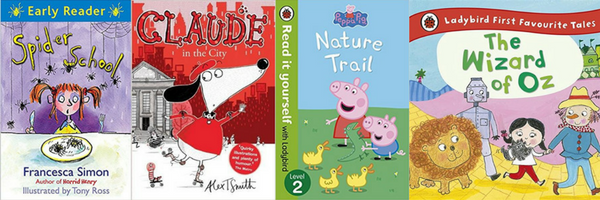
These introduce children to simple stories with defined chapters. The text is still bigger, with clear spacing on the page to help with easy sounding-out as they decode new words and expand their vocabulary. Words are often repeated throughout – this high frequency is a great way to build their confidence with word recognition whilst still giving them an engaging story. They still retain illustrations throughout to help support the story and make the page seem less intimidating than the daunting task of large passages of text.
Confident Readers – Chapter Books (Younger)
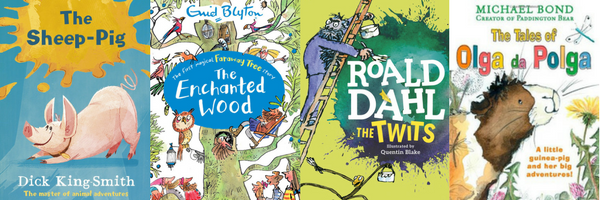
With these books the emphasis shifts fully to independent reading – books now have full text pages, with a few pictures integrated. The stories start to take on more depth with bigger plots, more new words and much more detail. Many authors create a series for their characters – this helps children continue to build confidence in their reading with a new book that still contains many familiar elements – these are perfect for those finding their feet, so don’t be afraid to dive into a series!
Confident Readers – Chapter Books (Older)
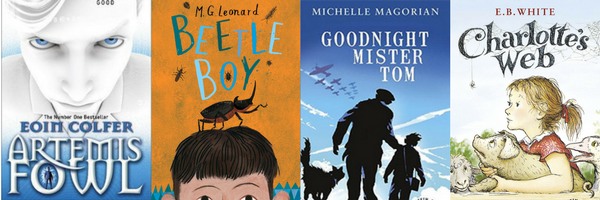
From here, the world is your book oyster! Books start to deal with bigger issues, moral dilemmas and challenges. There are of course still the funny, light-hearted stories, lots of adventures, mysteries and excitement but many books will tackle wider subjects – war, conservation, bullying, bereavement and families. These are not to be feared – they are an excellent way for children to learn to process big feelings – they can see themselves in the characters, relate to the situations and see what can be achieved. Books can be sad or frightening, but there is nothing wrong that – it shows a connection has been made between reader and book.
One final thing to keep in mind – don’t be put off or swayed by the section headings in shops, such as 5-8 or 9-12. You know your child best, those headings are usually a content guide but do not mean your child can’t jump ahead if they are ready or read from the “younger” section if they choose to! As a grown-up (most of the time!) I still read and love children’s books and I am very much past those age brackets!
Don’t limit your children’s book choices – let them read widely and enjoy the journey!
Happy Reading!
5 Comments
Garry Fry.
Very good introduction for parents seeking guidance and steps to navigate book interactions for their children.
Jane
Love your post. Will be following your progress with much interest. Stay curious!
Paul
Love it… bookmarked now!
Pingback:
Pingback: